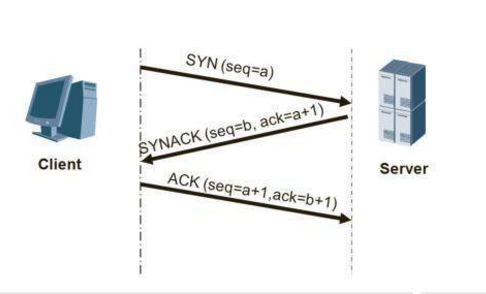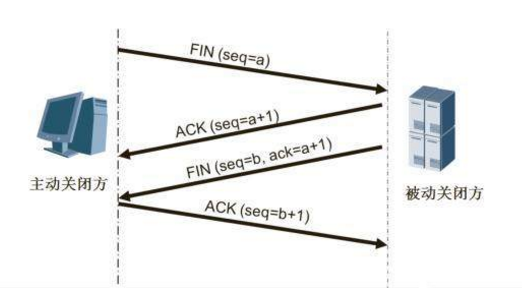TCP/IP参考模型

IP
ip地址:InetAddress
- 唯一定位一台网络上计算机
- 127.0.0.1本机localhost
- ip地址分类
- ipv4/ipv6
- ipv4:127.0.0.1 4个字节,0-255
- ipv6:128位 8个无符号整数
- 公网(互联网)-私网(局域网)
- ABCD类地址
- 192.168.xx.xx专门给组织内部使用的
- ipv4/ipv6
- 域名:记忆IP问题
public class TestInetAdress {
public static void main(String[] args) {
try {
//查询本机地址
InetAddress inetAddress1 =InetAddress.getByName("127.0.0.1");
System.out.println(inetAddress1);
InetAddress inetAddress2 =InetAddress.getByName("localhost");
System.out.println(inetAddress2);
InetAddress inetAddress3 =InetAddress.getLocalHost();
System.out.println(inetAddress3);
//查询网站ip地址
InetAddress inetAddress4 =InetAddress.getByName("www.bai.com");
System.out.println(inetAddress4);
//常用方法
System.out.println(inetAddress4.getCanonicalHostName());//规范的名字
System.out.println(inetAddress4.getHostAddress());//ip
System.out.println(inetAddress4.getHostName());//域名或自己电脑的名字
} catch (UnknownHostException e) {
// TODO Auto-generated catch block
e.printStackTrace();
}
}
}
/127.0.0.1
localhost/127.0.0.1
DESKTOP-UDIU5JN/192.168.0.102
www.bai.com/45.76.29.156
45.76.29.156
45.76.29.156
www.bai.com
端口
端口表示 计算机上的一个程序的进程
- 不同进程有不同的端口号!用来区分软件
- 被规定0-65535
- TCP,UDP:65535*2 单个协议下端口号不能冲突
- 端口分类
- 公有端口0-1023
- HTTP:80
- HTTPS:443
- FTP:21
- Telent:23
- 程序注册端口:1024-49151,分配用户或程序
- Tomcat:8080
- MySQL:3306
- Oracle:1521
- 动态,私有:49152-65535
- 公有端口0-1023
netstat -ano #查看所有端口
netstat -ano|findstr "5900"#产看指定端口
tasklist|findstr "8696"#产看指定端口的进程
public class TestInetSocketAdress {
public static void main(String[] args) {
InetSocketAddress socketAddress1 = new InetSocketAddress("127.0.0.1", 8080);
InetSocketAddress socketAddress2 = new InetSocketAddress("localhost", 8080);
System.out.println(socketAddress1);
System.out.println(socketAddress2);
System.out.println(socketAddress1.getAddress());
System.out.println(socketAddress1.getHostName());//地址
System.out.println(socketAddress1.getPort());//端口
}
}
通信协议
TCP/IP协议簇:实际是一组协议
重要:
- TCP:用户传输协议
- UDP:用户数据报协议
出名:
- TCP:用户传输协议
- IP:网络互连协议
TCP/UDP对比:
TCP:打电话
- 连接,稳定
- 三次握手,四次挥手
三次握手(three-way handshaking)
1.背景:TCP位于传输层,作用是提供可靠的字节流服务,为了准确无误地将数据送达目的地,TCP协议采纳三次握手策略。
2.原理:
1)发送端首先发送一个带有SYN(synchronize)标志地数据包给接收方。
2)接收方接收后,回传一个带有SYN/ACK标志的数据包传递确认信息,表示我收到了。
3)最后,发送方再回传一个带有ACK标志的数据包,代表我知道了,表示’握手‘结束。
通俗的说法
1)Client:嘿,李四,是我,听到了吗?
2)Server:我听到了,你能听到我的吗?
3)Client:好的,我们互相都能听到对方的话,我们的通信可以开始了。

四次挥手(Four-Way-Wavehand)
1.意义:当被动方收到主动方的FIN报文通知时,它仅仅表示主动方没有数据再发送给被动方了。
但未必被动方所有的数据都完整的发送给了主动方,所以被动方不会马上关闭SOCKET。
它可能还需要发送一些数据给主动方后,再发送FIN报文给主动方,告诉主动方同意关闭连接,所以这里的ACK报文和FIN报文多数情况下都是分开发送的。
2.原理:
1)第一次挥手:Client发送一个FIN,用来关闭Client到Server的数据传送,Client进入FIN_WAIT_1状态。
2)第二次挥手:Server收到FIN后,发送一个ACK给Client,确认序号为收到序号+1(与SYN相同,一个FIN占用一个序号),Server进入CLOSE_WAIT状态。
3)第三次挥手:Server发送一个FIN,用来关闭Server到Client的数据传送,Server进入LAST_ACK状态。
4)第四次挥手:Client收到FIN后,Client进入TIME_WAIT状态,接着发送一个ACK给Server,确认序号为收到序号+1,Server进入CLOSED状态,完成四次挥手
通俗的说法
1)Client:我所有东西都说完了
2)Server:我已经全部听到了,但是等等我,我还没说完
3)Server:好了,我已经说完了
4)Client:好的,那我们的通信结束l

- 客户端,服务端
- 传输完成,释放连接,效率低
UDP:发短信
- 不连接,不稳定
- 客户端,服务端:没有明确的界限
- 不管有没有准备好,都可以发给你
TCP聊天
//服务端
public class TestServerDemo1 {
public static void main(String[] args) {
ServerSocket serverSocket = null;
Socket socket = null;
InputStream is =null;
ByteArrayOutputStream baos =null;
try {
//1.建立服务端口
serverSocket = new ServerSocket(9999);
while(true) {
//2.等待客户端连接过来
socket = serverSocket.accept();
//3.读取客户端消息
is = socket.getInputStream();
//管道流
baos = new ByteArrayOutputStream();
byte[] buffer = new byte[1024];
int len;
while ((len = is.read(buffer))!=-1) {
baos.write(buffer, 0, len);
}
System.out.println(baos.toString());
}
} catch (IOException e) {
// TODO Auto-generated catch block
e.printStackTrace();
}finally {//先开后关,捕获异常
if(baos!=null) {
try {
baos.close();
} catch (IOException e) {
// TODO Auto-generated catch block
e.printStackTrace();
}
}
if(is!=null) {
try {
is.close();
} catch (IOException e) {
// TODO Auto-generated catch block
e.printStackTrace();
}
}
if(socket!=null) {
try {
socket.close();
} catch (IOException e) {
// TODO Auto-generated catch block
e.printStackTrace();
}
}
if(serverSocket!=null) {
try {
serverSocket.close();
} catch (IOException e) {
// TODO Auto-generated catch block
e.printStackTrace();
}
}
}
}
}
//客户端
public class TestClientDemo1 {
public static void main(String[] args) {
Socket socket = null;
OutputStream os = null;
try {
//1.要知道服务器的地址,端口号
InetAddress serverIP =InetAddress.getByName("127.0.0.1");
int port =9999;
//2.创建一个Socket连接
socket = new Socket(serverIP, port);
//3.发送消息 IO流
os =socket.getOutputStream();
os.write("hello".getBytes());
} catch (Exception e) {
// TODO Auto-generated catch block
e.printStackTrace();
}finally {//先开后关,捕获异常
if(os!=null) {
try {
os.close();
} catch (IOException e) {
// TODO Auto-generated catch block
e.printStackTrace();
}
}
if(socket!=null) {
try {
socket.close();
} catch (IOException e) {
// TODO Auto-generated catch block
e.printStackTrace();
}
}
}
}
}
TCP文件上传
IDEA成功,Ecplise失败。。。
//服务端
public class TcpServerDemo1 {
public static void main(String[] args) throws Exception {
//1.创建服务
ServerSocket serverSocket = new ServerSocket(8080);
//2.监听客户端的连接
Socket socket =serverSocket.accept();
//3.获取输入流
InputStream is =socket.getInputStream();
//4.文件输出
FileOutputStream fos = new FileOutputStream(new File("receive.jpg"));
byte[] buffer = new byte[1024];
int len;
while ((len=is.read(buffer))!=-1) {
fos.write(buffer,0,len);
}
//通知客户端我接收完了
// OutputStream os =socket.getOutputStream();
// os.write("接收完毕,你可以断开了".getBytes());
//关闭资源
// os.close();
fos.close();
is.close();
socket.close();
serverSocket.close();
}
}
//客户端
public class TcpClientDemo1 {
public static void main(String[] args) throws Exception {
//1.创建一个Socket连接
Socket socket = new Socket(InetAddress.getByName("127.0.0.1"), 8080);
//2.创建一个输出流
OutputStream os =socket.getOutputStream();
//3.读取文件
FileInputStream fis = new FileInputStream(new File("lufei.jpg"));
//4.写出文件
byte[] buffer = new byte[1024];
int len;
while ((len= fis.read(buffer))!=-1) {
os.write(buffer,0,len);
}
//通知服务器,我已经结束了
// socket.shutdownOutput();
//确定服务器接收完毕,才能断开连接
// InputStream inputStream =socket.getInputStream();
//
// ByteArrayOutputStream baos = new ByteArrayOutputStream();
// byte[] buffer2 = new byte[1024];
// int len2;
// while ((len2= fis.read(buffer2))!=-1) {
// baos.write(buffer2, 0, len2);
// }
// System.out.println(baos.toString());
//关闭文件
// baos.close();
// inputStream.close();
fis.close();
os.close();
socket.close();
}
}
UDP消息发送
//不需要连接服务器
public class UdpClientDemo1 {
public static void main(String[] args) throws Exception {
//1.建立一个Socket
DatagramSocket socket = new DatagramSocket();
//2.建个包
String msg = "你好啊";
InetAddress localhost = InetAddress.getByName("localhost");
int port =8080;
//数据,数据长度起始,要发给谁
DatagramPacket packet =new DatagramPacket(msg.getBytes(),0,msg.getBytes().length,localhost,port);
//3.发送包
socket.send(packet);
//4.关闭流
socket.close();
}
}
//还是要等到(客户端)的连接
public class UdpServerDemo1 {
public static void main(String[] args) throws Exception {
//开放端口
DatagramSocket socket = new DatagramSocket(8080);
//接收数据包
byte[] buffer = new byte[1024];
DatagramPacket packet = new DatagramPacket(buffer,0,buffer.length);
socket.receive(packet);//阻塞接收
System.out.println(packet.getAddress().getHostAddress());
System.out.println(new String(packet.getData(), 0, packet.getLength()));
//关闭连接
socket.close();
}
}
UDP多线程聊天
public class TalkSend implements Runnable{
DatagramSocket socket =null;
BufferedReader reader =null;
private int fromPort;
private String toIP;
private int toPort;
public TalkSend(int fromPort, String toIP, int toPort) {
this.fromPort = fromPort;
this.toIP = toIP;
this.toPort = toPort;
try {
socket = new DatagramSocket(fromPort);
//准备数据,控制台读取
reader = new BufferedReader(new InputStreamReader(System.in));
} catch (SocketException e) {
e.printStackTrace();
}
}
@Override
public void run() {
while (true){
try {
String data = reader.readLine();
byte[] datas =data.getBytes();
DatagramPacket packet =new DatagramPacket(datas,0,datas.length,new InetSocketAddress(this.toIP,this.toPort));
//发送包
socket.send(packet);
if (data.equals("bye")){
break;
}
} catch (Exception e) {
e.printStackTrace();
}
}
socket.close();
}
}
public class TalkReceive implements Runnable{
DatagramSocket socket =null;
private int port;
private String msgFrom;
public TalkReceive(int port,String msgFrom) {
this.port = port;
this.msgFrom=msgFrom;
try {
socket = new DatagramSocket(port);
} catch (SocketException e) {
e.printStackTrace();
}
}
@Override
public void run() {
while (true){
try {
//准备接收包裹
byte[] container = new byte[1024];
DatagramPacket packet =new DatagramPacket(container,0,container.length);
socket.receive(packet);//阻塞接收
//断开连接
byte[] data =packet.getData();
String receiveData = new String(data,0,data.length);
System.out.println(msgFrom+": "+receiveData);
if (receiveData.equals("bye")){
break;
}
} catch (Exception e) {
e.printStackTrace();
}
}
socket.close();
}
}
public class TalkStudent {
public static void main(String[] args) {
//开启两个线程
new Thread(new TalkSend(7777,"localhost",9999)).start();
new Thread(new TalkReceive(8888,"老师")).start();
}
}
public class TalkTeacher {
public static void main(String[] args) {
//开启两个线程
new Thread(new TalkSend(5555,"localhost",8888)).start();
new Thread(new TalkReceive(9999,"学生")).start();
}
}
URL
统一资源定位符
DNS域名解析:https://www.baidu.com xxx.x…x.x
协议://ip地址:端口/项目名/资源
public class URLDemo {
public static void main(String[] args) throws MalformedURLException {
URL url = new URL("https://www.bilibili.com/blackboard/activity-yellowVSgreen5th.html");
System.out.println(url.getProtocol());//协议
System.out.println(url.getHost());//主句ip
System.out.println(url.getPort());//端口
System.out.println(url.getPath());//文件
System.out.println(url.getFile());//全路径
System.out.println(url.getQuery());//参数
}
}
URL下载资源
public class URLDemo {
public static void main(String[] args) throws Exception {
//1.下载地址
URL url = new URL("https://s2.music.126.net/style/web2/img/sprite.png?1a1a0e0219c531c6d1d7900c6f44bb3f");
//2.连接这个资源
HttpURLConnection urlConnection = (HttpURLConnection) url.openConnection();
InputStream inputStream =urlConnection.getInputStream();
FileOutputStream fos =new FileOutputStream("sprite.png");
byte[] buffer =new byte[1024];
int len;
while ((len=inputStream.read(buffer))!=-1){
fos.write(buffer,0,len);//写出这个数据
}
fos.close();
inputStream.close();
urlConnection.disconnect();//断开连接
}
}
学习视频:狂神说Java

























 被折叠的 条评论
为什么被折叠?
被折叠的 条评论
为什么被折叠?








